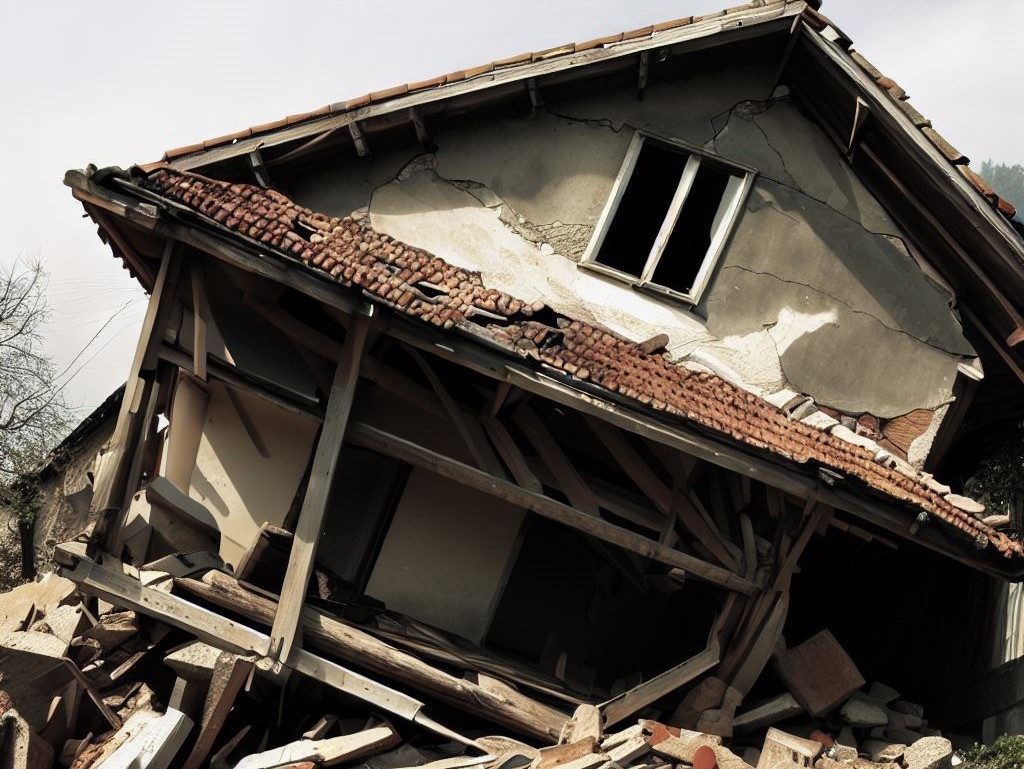In this article, we would like to discuss the practical aspects of real estate investment risks in Japan.
Real estate investment can be an attractive means of wealth creation; however, it involves substantial transactions. Without a proper understanding of the risks and with unplanned borrowing or incorrect investment decisions, it can potentially threaten your primary source of income and lead to financial ruin.
Therefore, we aim to provide accurate insights into the risks associated with real estate investment. We will explain each of these risks in detail, so we encourage you to read through to the end for a comprehensive understanding.
The Reliability of This Article
This article was written by someone with the following background:
- Over 15 years of experience in real estate brokerage at a well-known major real estate agency
- Successfully closed more than 300 real estate brokerage cases to date
- A certified 1st Class Financial Planner
- A Certified Financial Planner (CFP)
- A licensed Real Estate Transaction Specialist
Risk 1: Not Having a Down Payment

While there’s an abundance of real estate investment books and YouTube videos out there, some recommend the idea of purchasing high-yield properties without putting down a down payment. This strategy may seem alluring, as it allows investors to acquire real estate without any upfront capital. However, it’s a risky proposition that typically only works for exceptionally high-yield properties that deviate from the market norm.
In the realm of Japanese real estate investment, how you leverage borrowing is a critically important factor for success. Let’s consider the following scenarios. We’ll assume an unusually generous 8% rental yield for the property, with separate self-funded expenses for acquisition costs.
Furthermore, we’ll factor in property ownership costs, including property tax, fire insurance premiums, management fees (approximately 5% of rent), cleaning expenses, tenant recruitment costs, overall building maintenance, and interior repair costs upon tenant turnover. Since properties are rarely occupied at full capacity year-round, we’ll also account for a vacancy rate of approximately 10%.
Example 1: Using 30% Self-Funded and 70% Loan for Property Purchase
(Assumptions)
Budget: 50 million yen (1.5 million self-funded + 3.5 million borrowed)
Property Gross Yield: 8%
Ownership Costs: 20% of rent + annual loan repayment
Lost Rental Income Due to Vacancy (Vacancy Risk): 10% of rent
Loan Terms: 1.5% interest rate, 25-year repayment
Annual Loan Repayment: Approximately 1.68 million yen
(Analysis)
Property Price… 50 million yen (①)
Rental Income… ① × 8% (yield) = 4 million yen (②)
Ownership Costs… ② × 20% (cost rate) + 1.68 million yen (annual repayment) = 2.48 million yen (③)
Lost Rental Income… ② × 10% = 400,000 yen (④)
Actual Annual Income… ② – ③ – ④ = 1.12 million yen (Monthly: 93,000 yen)
Example 2: Borrowing the Full Property Price
(Assumptions)
Budget: 50 million yen (0 self-funded + 5 million borrowed)
Property Gross Yield: 8%
Ownership Costs: 20% of rent + annual loan repayment
Lost Rental Income Due to Vacancy (Vacancy Risk): 10% of rent
Loan Terms: 1.5% interest rate, 25-year repayment
Annual Loan Repayment: Approximately 2.4 million yen
(Analysis)
Property Price… 50 million yen (①)
Rental Income… ① × 8% (yield) = 4 million yen (②)
Ownership Costs… ② × 20% (cost rate) + 2.4 million yen (annual repayment) = 3.2 million yen (③)
Lost Rental Income… ② × 10% = 400,000 yen (④)
Actual Annual Income… ② – ③ – ④ = 400,000 yen (Monthly: 33,000 yen)
As shown above, the cash flow in real estate investment is significantly impacted by loan repayment amounts. In the case of Example 2, where the entire property price is borrowed, the actual income from the property, after covering expenses, is only around 33,000 yen per month.
If the vacancy rate increases or rental rates decline due to the property’s age, it could lead to losses. Investing in real estate without a down payment carries a high risk, but this fact is often not well understood.
I also receive inquiries about “managing an apartment with a full loan,” but I always emphasize the significant risks involved in such an approach. Real estate investment comes with substantial risks, so careful planning and adequate funding are essential. Safety should be your top priority when investing.
Risk 2: Liquidity

Compared to stock investments, real estate investment is less liquid.
In stock investments, it’s possible to buy and sell shares on the same day. However, the same cannot be said for real estate. When it comes to real estate, selling typically takes three months to half a year or even longer. Moreover, with the proliferation of online brokerage platforms, stock trading fees have significantly decreased, allowing for low-cost buying and selling. In contrast, real estate transactions come with substantial expenses such as brokerage fees, real estate acquisition taxes, and registration costs for each transaction.
Additionally, due to the large investment amounts involved in real estate, the potential losses can have a significant impact, even to the point of financial ruin. There is no guarantee of the principal amount invested. These factors contribute to the higher return expectations associated with real estate investment when compared to investments like government bonds.
Despite the drawback of lower liquidity, the advantage of real estate investment lies in leveraging loans to achieve higher returns. Conversely, if real estate investment yields only low returns, it offers no significant advantages compared to other investments.
We’ve also compared real estate investment in Jpana to stock investment in a previous article. If you’re interested in understanding the relative merits of real estate investment, please feel free to read that article as well.

Risk 3: Population Decline

Over the past three decades, Japan’s population pyramid has undergone significant transformations. Japan is already grappling with the significant challenge of being an aging society with a declining birthrate. The baby boomer generation, roughly around the age of 40, represents the last demographic segment experiencing population growth, while the population in younger age groups is on a declining trend.
The government’s efforts to address these challenges have been slow to start, and unfortunately, this trend doesn’t appear to be easily reversible. It will likely require unprecedented measures such as accepting immigrants or implementing groundbreaking economic support policies to make a substantial impact.
With a diminishing number of students and a mass retirement of the baby boomer generation on the horizon, Japan is expected to see a decline in its working-age population in the future. Consequently, the demand for rental properties is also poised to shrink.
This demographic shift will have a significant impact on real estate investment. Apartment complexes and housing units that were once in high demand by students and single individuals, as well as family-oriented housing, are now facing disruptions in the balance between supply and demand.
Risk 4: Neglecting Location While Focusing Solely on Yield

In the realm of Japanese real estate, it’s all about location, especially the proximity to urban centers and train stations in particular.
One of the greatest risks associated with underestimating the importance of location in real estate investment is the lack of an exit strategy. I’ve had my fair share of experiences as a real estate professional, witnessing clients struggle with properties in rural areas that they couldn’t sell, all the while continuously paying property taxes.
Let me be clear: “Properties in rural areas don’t sell, even if they’re practically given away.”
It’s common for the initial yield to be high when you invest in such properties because they are often inexpensive. Investors tend to prioritize yield, and understandably so, as it’s a significant factor in increasing income when investing the same amount of money. However, high yield doesn’t make any property a good investment.
Occasionally, individuals consider investing in properties in small cities with a surface yield exceeding 15%, but in reality, these properties often have vacancy rates of around 30% to 40%. Furthermore, when you examine the rental rates for individual units, you’ll find a significant disparity: new tenants paying very low rent, while long-term occupants are paying much higher rents. A closer look at many of these high-yield properties reveals an ongoing exodus from rural areas, with larger, newer, and cheaper properties being built around train stations.
Rural areas, by nature, have lower rental demand, and the notion that lowering rent will automatically attract tenants simply doesn’t hold water.
Real estate investment is not something you can easily sell once you’ve purchased it. Therefore, it’s crucial to consider long-term risks and prioritize a prime location when making your investment decisions.
Risk 5: Investing in Studio Apartments

First and foremost, it’s worth mentioning that in Japan, most financial institutions, including major banks, do not provide loans for studio apartments. The only institutions that might offer loans for such properties are typically high-interest, less reputable financial entities. Specific requirements vary among banks, but generally, studio apartments fall below the minimum square meterage criteria for loan eligibility.
Furthermore, even if you manage to secure a loan, you’ll have to contend with additional fixed costs on top of loan repayments. These include maintenance fees, repair reserve funds, property taxes, fire insurance premiums, and management fees (if you opt for property management).
Investing in a studio apartment with a loan often results in financial deficits.
Additionally, studio apartments, as the name suggests, consist of only one room, which significantly increases the risk of vacancies. Tenant turnover tends to be relatively frequent in such properties, leading to increased costs and efforts associated with tenant recruitment and turnover. Moreover, in Japan, many developers flooded the market with studio apartments some time ago, resulting in oversaturation in competitive areas. This oversupply has led to fierce rental price competition, squeezing profit margins.
While investing in studio apartments may seem appealing to beginners due to the lower initial capital required compared to investing in entire buildings, it comes with its own set of challenges and risks that should not be overlooked.
Risk 6: Japan’s Vulnerability to Earthquakes

Japan is a country that experiences frequent earthquakes, and in the realm of real estate investment, seismic activity poses a significant and unpredictable risk.
One of the major challenges is that, in contemporary science, accurately predicting earthquakes remains impossible. Particularly concerning are earthquakes with a magnitude of 7 or higher, which carry the risk of causing damage or even the collapse of buildings. This can lead to a substantial decrease in the value of investment properties, potentially rendering them worthless and significantly impacting returns.
When engaging in real estate investment, careful consideration of a property’s seismic resilience is crucial. Newer buildings are designed and constructed in accordance with the latest seismic standards, offering a higher level of earthquake resistance. Conversely, older buildings constructed before 1981 (based on the previous seismic standards) have lower seismic resilience and a higher risk of structural damage in an earthquake.
For older properties, it’s essential to consider reinforcement or retrofitting to mitigate earthquake risks effectively. Additionally, earthquake insurance is an option, but it comes at a significant cost that can impact the overall return on investment.
Conclusion
In this article, we’ve discussed six crucial risks that you should be aware of before embarking on real estate investment. Real estate investment is a fantastic avenue for pursuing future income, but it’s essential not to underestimate the inherent risks.
While investing with full loans may sound appealing, it can lead to deteriorating cash flow and increased risk of financial deficits. To balance safety and profitability, it’s advisable to consider investing a significant down payment, ideally at least 30%, unless you’re dealing with exceptionally high-yield properties.
Furthermore, in real estate investment, the location is paramount. It’s crucial to pay close attention to the property’s location when making investment decisions.
Real estate investment comes with risks, but understanding these risks thoroughly and making informed, rational decisions can significantly increase your chances of success. We hope that you find success in your real estate investment endeavors.
Thank you for reading this far. We also have articles discussing properties you should avoid when investing in income-generating properties, so please feel free to check those out as well.











